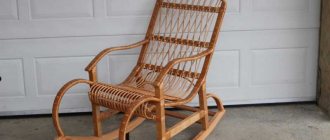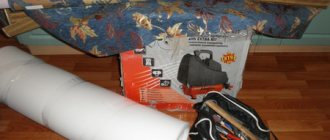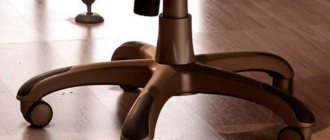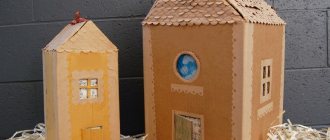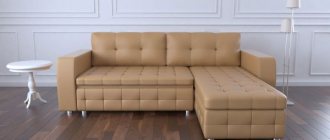How to choose fabric?
When choosing fabric for furniture, it is necessary to take into account factors such as wear resistance and strength. Today, fabrics are presented in a diverse range.
- If the chair will be in the living room, you can choose jacquard; this fabric has a printed pattern and retains its good appearance for a long time.
- A children's room is a place that should be not only cozy, but also practical. It is best to choose a fabric like flock; it is easy to clean and very practical to use. Flock is also chosen if there are animals in the house, this saves the furniture from the claws of a pet.
- Chenille is very resistant to various odors, it is great for the kitchen and balcony if people smoke on it.
In addition, you can opt for velor, leatherette, matting, suede and similar fabrics.
Choosing a filler
If the inside of the sofa is perfectly preserved and does not require replacement, then this step should be skipped, going straight to creating a pattern and reupholstering.
If the sofa has exhausted its resources, then its filler should be replaced, which can be of the following types:
Periotec
Non-woven material that includes natural fibers (coconut, flax, corn) and artificial components that hold their shape well and also provide elasticity and strength. The material is hypoallergenic, and its characteristics are quite capable of competing with a spring block.
Sintepon
A more budget-friendly option in the form of non-woven fabric, which is sold in rolls. By increasing the layers of padding polyester, you can adjust the degree of rigidity of the sofa itself. It is usually used as a layer between upholstery and polyurethane foam, which makes the surface soft.
Polyurethane foam
A highly porous material that holds its shape well, while being soft and comfortable enough to fill the seat and back of the sofa. It is absolutely safe for health, has a long service life, does not accumulate dust and unpleasant odors.
Spring block
Made to order according to your measurements, or selected from those options that are available. Keeps its shape perfectly and does not sag. It needs a felt layer that will protect the foam from the effects of springs.
Struttofiber
It is called “non-woven independent springs”, which perfectly retain pressure, distributing it evenly over the entire surface. It is one of the most practical and durable fillers today.
If you are in doubt about which filling will have the best qualities specifically for your sofa, then try forming a sandwich from struttofiber, polyurethane foam and felt. This combination will be the most advantageous, since the struttofiber holds its shape perfectly, the felt protects it from sagging at a specific point of constant pressure, and the top layer of polyurethane foam provides the necessary rigidity.
Re-upholstery tools
- Hammer, screwdriver, pliers
- Stapler and scissors
- Wide sling
- Fabric (required size)
- Filling – it can be synthetic winterizer or foam rubber
- Glue, gauze
A sewing machine is used to sew covers, but first you need to take accurate measurements of the back and seat of the chair, as well as the armrests, if any.
Consolidation
Reupholstering a chair-bed begins with securing the material to the side of the backrest. The staples are located at a distance of approximately 10 cm from one another. It is advisable to start from the middle.
When you finish one side, move to the other. Stretch the fabric and secure it in the same way. It is important to avoid wrinkles. Excess fabric is trimmed. The corners are formed. They are also secured with a stapler. Holes are cut for self-tapping screws or bolts.
The seats are reupholstered in the same way. For a chair-bed, it consists of two parts.
How to disassemble the chair?
If you don’t know how to reupholster a chair with your own hands, first of all, you need to disassemble the furniture and find out what condition the filling and wooden frame are in. We evaluate the appearance of the chair, determining what needs to be replaced.
The tenon parts must be carefully knocked out with a rubber hammer. The grooves must be cleaned, glued with glue, a bandage wrapped on top and, after complete drying, hammered into place.
After this, the foam rubber is replaced. Its dimensions should correspond to the dimensions of the old foam rubber. If necessary, the passes are replaced; they can be rubber or canvas; a stapler is used to attach new passes.
Restoration of frame parts
The concept of “restoration” includes not only reupholstery, but also restoration of the wooden parts of the chair. Over time, decorative parts (armrests, turned elements, curly chair legs) become unusable, that is, they become dull, the varnish surface wears off, and small cracks appear on the furniture frame.
What can be done in this case?
To solve this problem we will need:
- Sandpaper,
- Scraper,
- Blade from a stationery knife.
- Varnish, stain.
Every part needs to be sanded. You need to start with coarse grains, gradually moving to smaller ones.
Sanding should only be done in the direction of the grain. If you make movements against the grain, the varnish will definitely show transverse lines.
Many master restorers use a drill with special sanding drums to remove old varnish. They come in different widths and lengths and are very convenient for sanding hard-to-reach places.
- After the parts have been sanded, carefully remove the dust with a damp cloth or foam sponge.
- Apply nitro varnish with a soft brush until completely dry.
- After the varnish has dried, you can run your hand over the surface and feel how the pile rises. Using the finest sandpaper, we carefully “knock down” the raised fibers, that is, we make the surface smooth.
- Then you can apply a stain (alcohol, water or white spirit based) and only then cover it with any commercially available varnish.
Chair upholstery with fabric
The back must be cut from the first meter of fabric, and the seat from what remains. Try on a piece of fabric to the chair so as not to make mistakes in the measurements.
The cover is attached to the frame with a stapler; if you cannot sew the covers yourself, it is best to contact a sewing workshop. The tension should be done in your direction, when the cover is nailed to the frame, the distance between the staples or nails should be no more than four centimeters.
When doing work, you need to be careful. It is worth remembering that it is important to have properly sewn covers of suitable sizes, and then the reupholstery will certainly work out.
Recovery process
First, the back is restored. Here it plays the role of a headboard. To work, you will need a furniture stapler and staples for it. Experts recommend stocking up on 6 mm and 10 mm staples.
The first to be inspected are the tightening belts. If they are loose, they need to be tightened a little. To do this, one end of the belt must be disconnected from the headboard and tightened. Then secure it with a stapler. The staples must be driven in in any order. If they are placed in one row, the plywood may crack or delaminate.
If the belts are damaged, they can be replaced with new ones.
If necessary, in addition to the belts, you can also replace the soft gasket. To do this, the headboard is placed on a softener. A few centimeters are measured for bending. Next, you need to outline the back with a felt-tip pen and cut out the resulting part. Glue it to the old fabric on the chair and trim off the excess.
Car seat reupholstery
Reupholstering car seats is also a complex job that requires attention and patience. If you want to do this at home, then you need to familiarize yourself with the technology.
To begin with, a fabric is selected; the following fabrics are most often used for car interiors:
- — Suede and leather;
- — Alcantara;
- — Flock;
- — Velor;
You can choose the color of the fabric to match the color of the interior, but you can also use your imagination and make the upholstery in any color you wish. Before reupholstering, car seats must be removed. After this, all pieces of old covers are measured; the total area of new covers should be twenty to forty percent larger.
In order to avoid making mistakes and do the job well, it is best to watch a video of reupholstering a chair with your own hands, which provides detailed instructions. A new interior with fresh covers will delight the owner and all passengers in the cabin for a long time.
Features of disassembling upholstered furniture
Before starting work on removing old upholstery, it is necessary to dismantle structural elements that may interfere with its dismantling.
The fabric must be carefully removed, trying to avoid damage, as it will help to obtain a pattern for future covering.
It is advisable to combine the restoration of the external upholstery with the restoration of the frame of the product. Damaged parts are repaired and, if impossible, replaced with new ones.
Weakened areas of the wooden structure are stretched or reinforced with additional screws.
Before starting assembly work, wooden parts are cleaned of dust and dirt. Foam rubber that has visible deformation must be replaced.
Office chair reupholstery
Office chairs are very comfortable and durable. But even they require updating over time. That is why reupholstering such chairs is an opportunity to update furniture and give it a second life.
Artificial leather and thin fabrics can be used as materials for upholstery. If necessary, the frame, base, and filler are replaced.
Of the necessary tools you need to prepare the following set:
- — Stapler;
- - Scissors;
- — Screwdriver;
- - And also the fabric itself.
Before reupholstering, the chair must be disassembled. When measuring fabric for covers, you must not forget about the allowances; they should be enough for the covering. The remaining allowances after work must be carefully trimmed with scissors.
When disassembling the frame, do not lose the screws, as they will be needed for reassembly, and the absence of some of them will delay this process.
Preparation
First you need to determine what material will be used. The chair can be upholstered with fabric or leather. Working with one and another material has its own characteristics.
There are several requirements for the skin:
- It should be elastic and thin. It will be better if its thickness is no more than 3 mm. Thicker material is very difficult to work with. This is especially true when you have to connect several separate pieces together.
- Also, the material must be dry. Wet skin first stretches, and then dries out and becomes smaller. You can wet this material if there is a need to tighten it more.
With fabric the situation is a little simpler. It is not necessary to buy special upholstery fabric. You can take the simplest tapestry. It has several advantages:
- Low price compared to upholstery fabrics.
- Almost complete lack of opportunity to take a puff. If it does appear, you can simply cut off the loop. In this case, the integrity of the fabric and the pattern will not be damaged.
After the material has been selected, you need to inspect the chair-bed. It is important to determine in advance which parts need to be replaced or updated. These can be foam pads, staples, tie straps and, in fact, the upholstery itself.
Useful tips
If you are determined to reupholster the furniture yourself, you need to know special tricks that will help you avoid ruining your favorite chair. There are contraindications to self-stretching, these include:
- The furniture has a complex geometric shape.
- Furniture should be upholstered with natural fabric or very expensive material.
- The furniture is expensive or antique.
In this case, it is better not to take risks and trust the professionals. Correctly reupholstering an office chair has fewer subtleties, but this is also not a simple matter. The main thing is to follow the instructions and have at least the slightest idea of how to disassemble and assemble furniture.
When choosing upholstery, do not forget to take into account the overall interior of the room, the chair should fit into it, and the fabric itself should match the room. The old upholstery must be removed very carefully, as it will serve as a convenient template for creating new covers. The pattern on the fabric must match on all parts of the upholstery.
If you have never reupholstered furniture, try to start with the simplest thing - it could be a stool, ottoman or an old chair that is not particularly valuable. Thanks to these tips, renovating old, worn-out furniture will be successful and will be an enjoyable and exciting experience for you.
Jacquard for upholstered furniture
The described fabric is widely used in furniture production due to such qualities as density and rigidity. The fabric has such qualities due to certain features in its manufacture - it is not subject to unraveling.
The advantages of jacquard include:
- practicality and durability
- pleasant to the touch
- inclusion of cotton threads suggests good ventilation
The disadvantages of jacquard fabrics include their rather high cost.
The fabric can be used both for upholstering home furniture and for upholstering office chairs, which is advisable due to the ventilation properties of the fabric.




